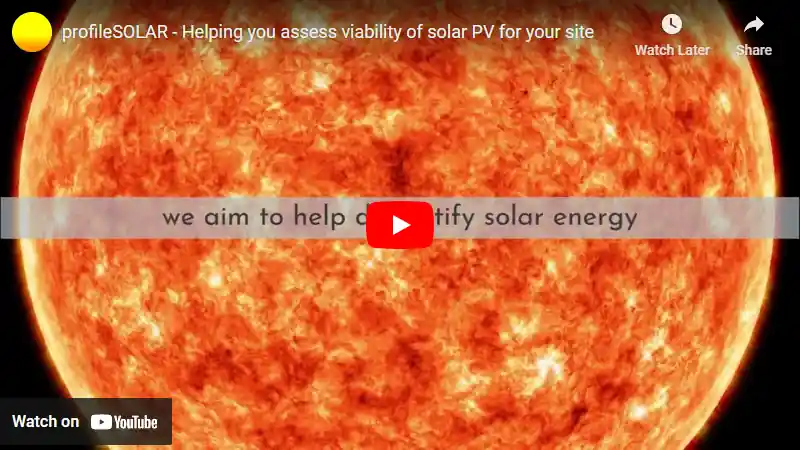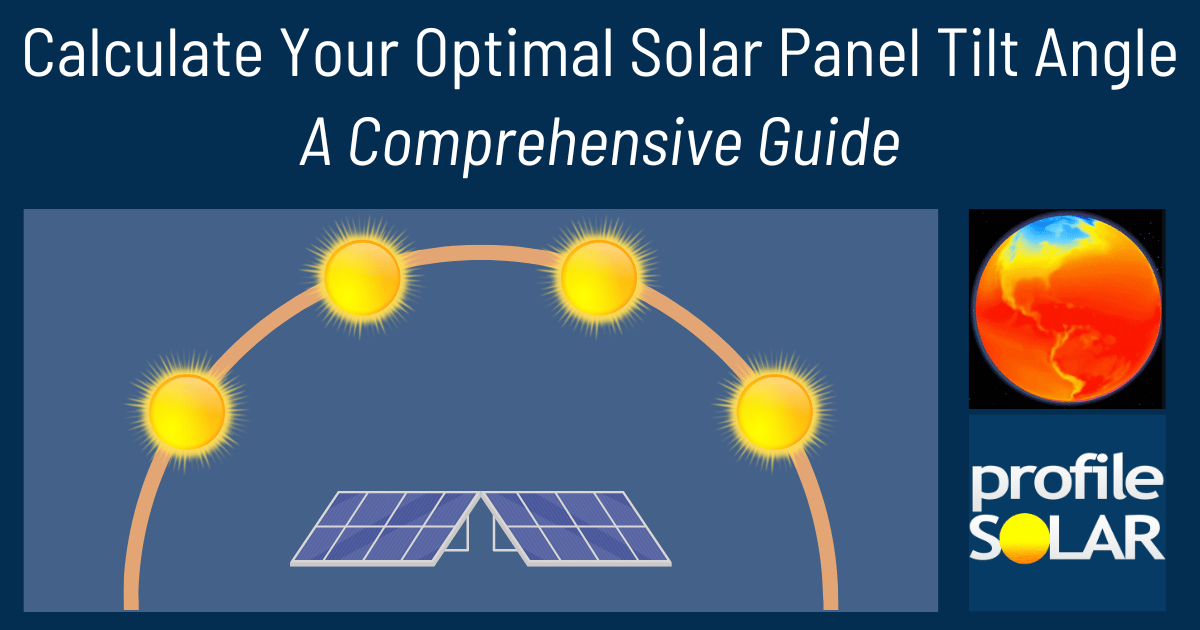

Scranton, Pennsylvania, in the United States, is a reasonably good location for generating energy through solar photovoltaic (PV) panels. This means using the sun's energy to create electricity. The amount of electricity you can get changes with the seasons. In summer and spring, you can expect quite a bit of electricity (5.82 and 5.15 kilowatt-hours per day for every kilowatt of solar panels installed). However, in autumn and winter, you'll get less because the days are shorter (3.13 and 1.80 kilowatt-hours per day). So if you're thinking about when to use your solar power most efficiently at this location, summer and spring would be your best bet.
To make sure that your panels are getting as much sunlight as possible throughout the year in Scranton, they should be tilted at an angle of 35 degrees facing south.
However there may be some local factors that could affect how much energy you can produce from your solar panels in Scranton:
1) Weather: Scranton experiences all four seasons with winters being particularly cold and sometimes snowy which might cover up your panels reducing their efficiency.
2) Topography: Depending on where exactly in Scranton you're located - if it's somewhere hilly or surrounded by tall buildings or trees - these could cast shadows on your panels.
3) Environmental: There aren't any significant environmental issues known to affect solar production here.
In order to prevent these potential issues from lowering how much energy you can generate:
- For snow coverage during winter months consider installing a snow guard or having an easy way to clear off any snow accumulation.
- For shading due to topography or nearby structures consider placing your installation where it will receive maximum sunlight throughout the day.
- Regular maintenance checks will also ensure that no unexpected issues arise impacting production levels.
Overall though these factors aren't likely enough to significantly impact whether it's worth installing solar panels in Scranton, Pennsylvania.
Note: The Northern Temperate Zone extends from 35° latitude North up to 66.5° latitude.
So far, we have conducted calculations to evaluate the solar photovoltaic (PV) potential in 905 locations across the United States. This analysis provides insights into each city/location's potential for harnessing solar energy through PV installations.
Link: Solar PV potential in the United States by location
Become the exclusive sponsor for Scranton, United States!
Solar output per kW of installed solar PV by season in Scranton
Seasonal solar PV output for Latitude: 41.39, Longitude: -75.6636 (Scranton, United States), based on our analysis of 8760 hourly intervals of solar and meteorological data (one whole year) retrieved for that set of coordinates/location from NASA POWER (The Prediction of Worldwide Energy Resources) API:




Ideally tilt fixed solar panels 35° South in Scranton, United States
To maximize your solar PV system's energy output in Scranton, United States (Lat/Long 41.39, -75.6636) throughout the year, you should tilt your panels at an angle of 35° South for fixed panel installations.
As the Earth revolves around the Sun each year, the maximum angle of elevation of the Sun varies by +/- 23.45 degrees from its equinox elevation angle for a particular latitude. Finding the exact optimal angle to maximise solar PV production throughout the year can be challenging, but with careful consideration of historical solar energy and meteorological data for a certain location, it can be done precisely.
We use our own calculation, which incorporates NASA solar and meteorological data for the exact Lat/Long coordinates, to determine the ideal tilt angle of a solar panel that will yield maximum annual solar output. We calculate the optimal angle for each day of the year, taking into account its contribution to the yearly total PV potential at that specific location.

Seasonally adjusted solar panel tilt angles for Scranton, United States
If you can adjust the tilt angle of your solar PV panels, please refer to the seasonal tilt angles below for optimal solar energy production in Scranton, United States. As mentioned earlier, for fixed-panel solar PV installations, it is optimal to maintain a 35° South tilt angle throughout the year.
| Overall Best Summer Angle | Overall Best Autumn Angle | Overall Best Winter Angle | Overall Best Spring Angle |
|---|---|---|---|
| 25° South in Summer | 45° South in Autumn | 56° South in Winter | 34° South in Spring |
Our recommendations take into account more than just latitude and Earth's position in its elliptical orbit around the Sun. We also incorporate historical solar and meteorological data from NASA's Prediction of Worldwide Energy Resources (POWER) API to assign a weight to each ideal angle for each day based on its historical contribution to overall solar PV potential during a specific season.
This approach allows us to provide much more accurate recommendations than relying solely on latitude, as it considers unique weather conditions in different locations sharing the same latitude worldwide.
Topography for solar PV around Scranton, United States
Scranton, Pennsylvania is located within the Ridge-and-Valley region of the Appalachian Mountains. The topography is characterized by long, even ridges with valleys in between. The city itself sits in the Lackawanna River valley.
For large-scale solar PV installations, flat or gently sloping areas are typically preferred to minimize installation costs and maximize sun exposure. In general, south-facing slopes are ideal in the northern hemisphere for maximum sun exposure throughout the year.
Given Scranton's location and topography, potential sites for large-scale solar PV might include:
1. Flat or gently sloping areas within the valleys: While much of this land may be developed or used for agriculture already, there could be opportunities for dual-use (agrivoltaics) or brownfield development.
2. South-facing mountain slopes: These could provide good sun exposure but might have higher installation costs due to slope and accessibility challenges.
3. Reclaimed mining lands: Northeastern Pennsylvania has a history of coal mining and there may be reclaimed lands that could be suitable for solar development.
4. Rooftops of large buildings or parking lots: Urban environments like Scranton can also support larger scale rooftop solar installations on commercial buildings or over parking lots (solar canopies).
Final selection would need to take into account a variety of factors beyond just topography such as local zoning regulations, proximity to transmission lines or substations (for grid connection), potential environmental impacts, etc. Detailed site assessments would likely be necessary.
United States solar PV Stats as a country
United States ranks 2nd in the world for cumulative solar PV capacity, with 95,209 total MW's of solar PV installed. This means that 3.40% of United States's total energy as a country comes from solar PV (that's 26th in the world). Each year United States is generating 289 Watts from solar PV per capita (United States ranks 15th in the world for solar PV Watts generated per capita). [source]
Are there incentives for businesses to install solar in United States?
Yes, there are several incentives for businesses wanting to install solar energy in the United States. These include federal tax credits, state and local rebates, net metering policies, and renewable energy certificates (RECs). Additionally, many states have enacted legislation that requires utilities to purchase a certain amount of electricity from renewable sources such as solar.
Do you have more up to date information than this on incentives towards solar PV projects in United States? Please reach out to us and help us keep this information current. Thanks!
Feeling generous?

Share this with your friends!


Compare this location to others worldwide for solar PV potential
The solar PV analyses available on our website, including this one, are offered as a free service to the global community. Our aim is to provide education and aid informed decision-making regarding solar PV installations.
However, please note that these analyses are general guidance and may not meet specific project requirements. For in-depth, tailored forecasts and analysis crucial for feasibility studies or when pursuing maximum ROI from your solar projects, feel free to contact us; we offer comprehensive consulting services expressly for this purpose.
Helping you assess viability of solar PV for your site
Calculate Your Optimal Solar Panel Tilt Angle: A Comprehensive Guide
Enhance your solar panel's performance with our in-depth guide. Determine the best tilt angle using hard data, debunk common misunderstandings, and gain insight into how your specific location affects solar energy production.






